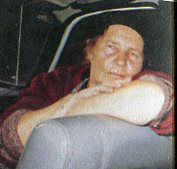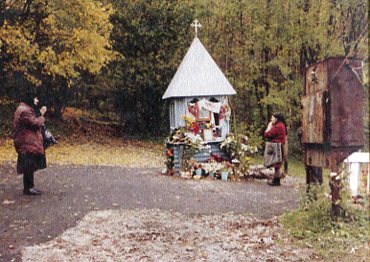How many have heard of Zarvanytsya?
Hidden in the deepest rural areas of Ukraine is one of the world’s most powerful shrines. I encountered it in 1991 when conducting research there. And I would put it up there with spots such as Lourdes, Fatima, the Miraculous Medal in Paris, Guadalupe, Laus, and Medjugorje.
In just over a week, on June 30, the church there will be consecrated as a minor basilica.
No, overall, it’s not at the same level as Lourdes and Guadalupe and Medjugorje, which are much more expansive, with many corners of Grace. In that sense, you can’t compare them. Zarvanytsya is more limited.
But overall, as far as “high-point” events — that special feeling that comes in one or two spots there — it’s right up with the more famous ones.
And the history is amazing.

Since that time, Zarvanytsya has been known for the miraculous, curative well, which survived not only attacks by barbarians but the incredible persecutions of Communists, who blocked roads to it, enwound the well with barbed wire, and at one point poured diesel fuel down it. The image, once stolen by Communists, spent decades in hiding.
But the icon as well as the sanctity managed to survive all onslaught. When I arrived in the village, which is 112 miles from Lviv (where I was staying), past the turkeys roosting in trees and the horse buggies, I learned that Mary began reappearing at Zarvanytsya in the mid-1980s — as Communism began to collapse.

“The light was like silver. The Lady was in blue clothes with a white sash, and a barefooted baby was in her arms. On her head Mary had a white shawl. I saw this for about half an hour. The glow was seen very often for two or three weeks in 1987, I think the autumn. The Holy Mother warned us to return to church and love one another.”
Although the KGB moved in with force, unleashing attack dogs and clubbing pilgrims to the point where a number required hospital treatment, the apparitions continued at least through 1988, according to Mykola Krushelnyckyj, a factory worker who was sauntering up a dirt road one evening in December of that year when he spotted something in the sky over the vicinity of the well.

The glowing mass, which was at least twice the height of a tall tree, moved north over the woods and meadows, fading beyond and behind a mountain like an ephemeral cloud.
—
And so there is Zarvanytsya — like Laus, a very surprising wellspring of grace. Remember it next Sunday (June 30).
The morning I left — back in Lviv — I walked to a small Ukrainian Catholic chapel for Mass before heading to the airport. And to this day I am baffled at what — or rather, who — I saw.
For there in the small crowd standing for Mass in a sanctuary with no pews was the poor peasant woman I had spoken with the day before — Chornij Zenovia.
Why was this farm peasant in the city? How conceivably had she found her way to Lviv? Even those who were better off (my driver was the husband of a doctor) rarely owned their own cars, and there was no mass transportation. How had she gotten there? And again, why?
We tried to speak with each other, but I no longer had a translator with me and so am left with a little mystery amid all the Grace.
–MHB
[resources: Michael Brown retreat, New Mexico, and pilgrimage, Medjugorje]


